Germinating Seeds Under LED Grow Lights [Guide for 2023]
Do you want to grow robust, healthy plants? Do you have a desire for innovation and the latest technology? LED Grow Lights may be just what you need. This article explores how to germinate seeds under LED lights, providing readers with all of the necessary information on this modern growing method.
LED Grow Lights are becoming increasingly popular among indoor gardeners. They offer an efficient solution that is tailored specifically to the needs of each individual plant or crop; allowing growers to achieve better results in less time than ever before.
Through careful selection and regulation of the light intensity, it’s possible to ensure optimal growth conditions for any given species. Furthermore, LEDs emit much less heat than traditional methods such as HID lighting systems – making them more energy-efficient and cost-effective over time.
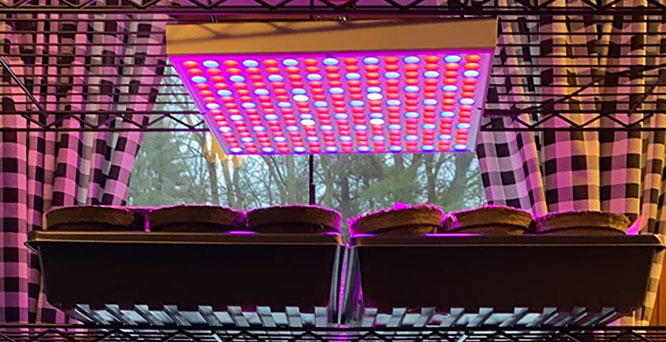
Germinating seeds using LED Grow Lights can provide several advantages compared to conventional gardening techniques. For example, they help reduce transplant shock by encouraging strong root development prior to planting out into larger pots or beds.
Additionally, they allow farmers and hobbyists alike to start their own seedlings without needing access to natural sunlight – perfect for those living in areas where outdoor conditions aren’t ideal for starting seedlings indoors year round. Read on for tips and advice on getting started with germinating your own seeds under LED lights!
Will Seeds Germinate Under LED Light?
It’s a common question for those interested in growing plants indoors: will seeds germinate under LED light? To answer this, it must first be understood what the requirements are for successful seed germination.
Seeds need water, oxygen and an ideal temperature range to begin their development process. Moreover, they require some form of light source that can provide enough intensity to stimulate growth once roots have formed. In terms of artificial lighting sources, LEDs have been found to be effective at providing the necessary illumination during both early and later stages of plant growth.
In laboratory tests conducted by scientists, various types of LED lights have demonstrated promising results when used to initiate seed germination processes. Furthermore, LEDs offer many advantages over other forms of indoor lighting such as lower energy consumption and longer lifespans compared with fluorescent or HPS systems. As such, LEDs may be considered a viable option for helping promote healthy seed germination indoors.

Are Led Lights Too Strong For Seedlings?
LED grow lights are known for their ability to provide intense light with minimal energy consumption. However, the intensity of LED lights can be a double-edged sword when it comes to germinating seeds. Too much light exposure can hinder seedling growth and lead to weaker plants in the long run.
In order for seedlings to establish themselves properly, they need consistent access to moderate levels of natural or artificial light. When exposed to too much light from an LED system, young seedlings may experience stunted growth and develop weak root systems that are unable to support them as they mature into adult plants.
To ensure optimal germination rates and healthy plant development, growers should consider reducing the intensity of LED lighting during the early stages of cultivation. Alternatively, using supplemental sources of diffuse sunlight or fluorescent lighting instead could provide a more balanced environment for seeding development without risking damage caused by excessive illumination.
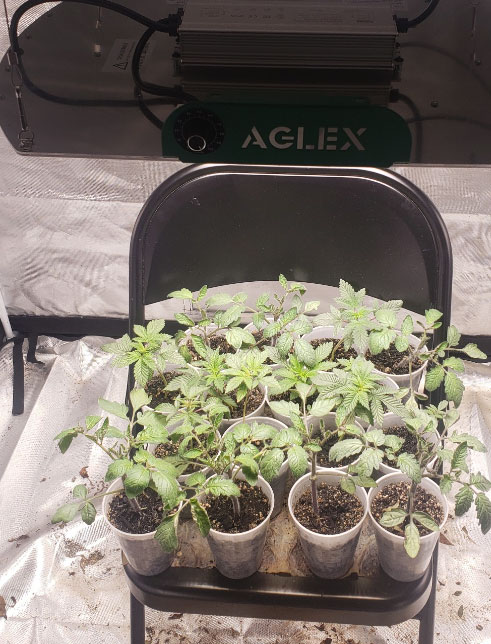
How Far Should Led Lights Be From Seedlings?
The answer to this question depends on the type, brand, make or model of LED light being used and the growing environment. Generally, a distance of 12-18 inches should be maintained between seedlings and LED lights for optimal growth. This provides enough coverage for all plants without subjecting them to too much heat or intensity from the LEDs.
The distance between plants and LED lights can also be adjusted based on the size of the plants and how quickly they are growing. For example, taller plants may need more space than shorter ones, while faster-growing varieties require closer proximity to take advantage of increased light exposure.
In addition to providing adequate spacing, it’s important that growers pay attention to air circulation around the plants as well. Without proper ventilation, hot spots can form in enclosed areas which could cause damage to delicate seedlings.
To ensure good airflow, use fans or open windows when possible, especially if temperatures become too warm during peak daylight hours. By following these simple steps, growers will create an optimal environment for their seedling’s development under LED grow lights.
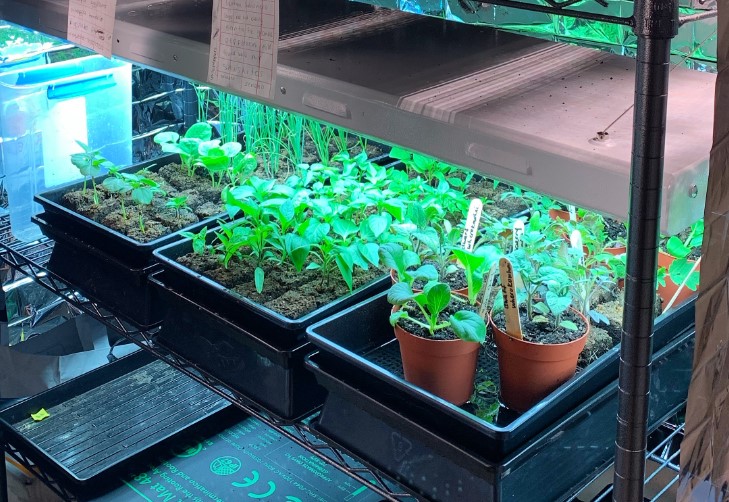
What Happens If Seedlings Get Too Much Light?
It’s like a bright sun shining too brightly on seedlings, scorching them and drying up the soil. Too much light can have detrimental effects on germinating seeds:
- Leaves become pale and yellow due to photosynthesis not working correctly.
- Plant growth stops as energy production halts.
- Stems become thin or leggy from reaching out for more light.
These are all signs of an unhealthy plant that has been exposed to intense lighting conditions. Intense lights can cause the leaves to burn, leading to stunted growth, or worse yet, death. To prevent this from happening, it’s important to ensure your LED grow lights aren’t providing too much intensity for your seedlings.
In addition, you should also be mindful of how long they are receiving light each day and make sure there is adequate rest time between periods of illumination. Without proper care and attention to detail when using LED grow lights with seedlings, plants could suffer serious consequences if they receive too much exposure.
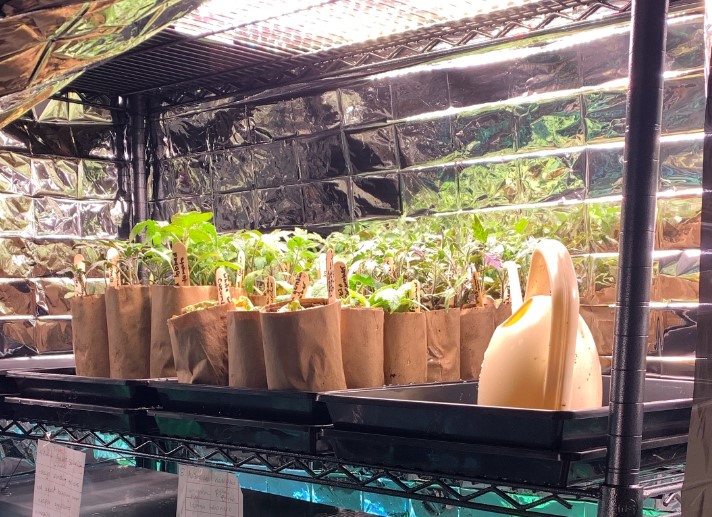
What Color LED For Seed Germination?
The color of LED light used for seed germination can have a significant impact on the growth and development of young plants. Different colors affect different aspects, such as photosynthesis, respiration, and phototropism in various ways. Therefore, selecting the proper spectrum is essential to ensure successful germination.
LED grow lights are available in many colors, with higher-end models providing even more options. The most common LED colors for seed germination are red and blue. Red LEDs emit wavelengths around 660 nanometers that help promote strong stem elongation while also aiding flowering. Blue LEDs emit wavelengths around 450 nanometers that stimulate chlorophyll production and enhance leafy green growth. Combining both red and blue together creates a good balance between vegetative and reproductive functions; this often provides the best results when starting seeds indoors under LED lighting.
It should be noted that other less common colors like ultraviolet (UV) or infrared (IR) may provide additional benefits for certain crops depending on their requirements but these usually require specialized equipment which makes them impractical for home growers who only want to start a few plants from seed. Ultimately, each situation will need to be evaluated independently before deciding which type of light is best suited for your particular needs.

Watering And Humidity Requirements
When it comes to germinating seeds under LED grow lights, water and humidity play a critical role in the process. Much like life itself, these two elements are essential for seedlings to take root and blossom into their full potential. The analogy of water representing nurture and love is no mistake; indeed, watering your seedlings regularly with just enough moisture will give them a fighting chance as they sprout from the soil.
On top of that, maintaining an ideal level of humidity around the plants can help keep them healthy as well. After all, too little or too much moisture can lead to stunted growth if not addressed quickly enough. To prevent this issue while also providing adequate ventilation for oxygen exchange, some gardeners opt for using fans or humidifiers alongside their LED grow lights. This allows them to monitor the relative humidity levels more accurately while ensuring that each plant has access to both light and air without compromising on either one.
The right balance between lighting, watering and humidity is key when growing any kind of plant indoors – regardless if it’s with basic sunlight or advanced LED technology – so always make sure you double-check before planting anything! With proper care and attention given throughout the entire process, you’ll be able to watch your very own greenery thrive in its optimal environment.
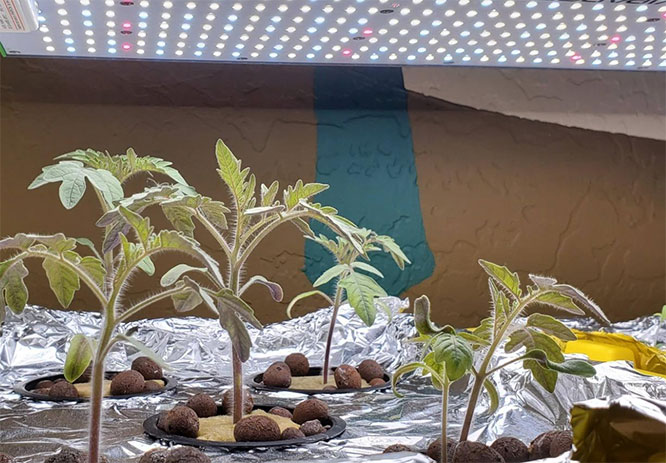
Ventilation Needs
The need for proper ventilation in a growing environment is essential for successful germination. Without sufficient airflow, temperatures will rise and humidity levels become too high, leading to mold growth that can damage young seedlings. In addition, stagnant air can reduce the effectiveness of LED grow lights and create an inhospitable environment for plant growth.
LED grow lights require efficient ventilation systems designed to exhaust hot air away from the light source and bring fresh air into the space. The ideal system should include both intake and exhaust fans with variable speed controls; this allows growers to adjust the fan speeds based on temperature changes throughout the day or depending on the number of plants being grown at once. Additionally, adding additional filters such as carbon filters can help remove odors while purifying the air around your plants.
Ventilation is critical to creating a healthy, productive growing environment and requires careful planning when setting up indoor gardens using LED grow lights. Properly implemented systems will ensure all plants get adequate airflow while also preventing heat build-up around the lamps themselves. This leads to improved lighting efficiency and healthier plants overall.
Monitoring The Seedlings
Once seeds have been germinated beneath LED grow lights, the seedlings must be monitored closely. This is especially true when starting a new crop of plants or if any issues arise during their development.
The most important factors to monitor include temperature and humidity levels, as well as light intensity and duration. Keeping these parameters within specific ranges helps ensure healthy growth and maximum yield potentials for the cultivar in question.
In addition to environmental conditions, it’s also important to inspect the seedling itself. A thorough inspection should involve looking for signs of disease or pest damage that may hinder its progress. If any signs are observed, immediate action should be taken to address them before they cause permanent harm to the plant’s health. Monitoring can help identify problems early on so that corrective measures can be implemented in a timely manner.
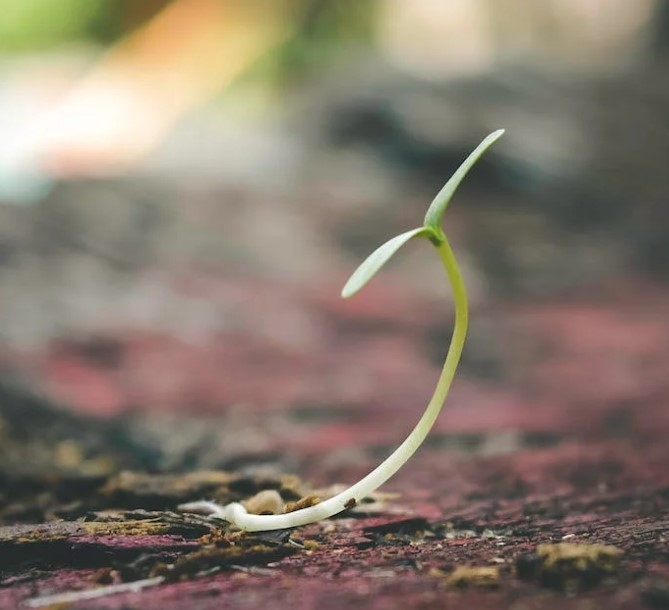
Troubleshooting Issues With Germination
Having monitored the seedlings and ensured they are receiving enough light, water, air circulation, and humidity, it’s beneficial to be aware of potential obstacles that can prevent successful germination. Unsuccessful germination may arise from a variety of causes including problems with temperature fluctuations or incorrect soil composition.
Temperature fluctuation has an impact on the speed at which seeds sprout and thus needs to remain within certain ranges. If temperatures drop too low then the process will slow down significantly; similarly if temperatures become too hot then there is a risk of killing the embryo inside the seed. For optimal results, ensure the environment does not swing between extremes and instead remains in a steady range for best results.
Similarly, paying attention to soil composition will help avoid issues with unsuccessful planting. Ensure pH levels remain suitable for each type of plant being grown as well as adding organic material such as compost or peat moss to create more balanced nutrients throughout the mediums used for growing plants indoors under LED grow lights. By troubleshooting these two key areas prior to sowing any seeds, gardeners can achieve better rates of success when attempting indoor germination.
Conclusion
It’s clear that LED lighting can be used to successfully germinate seeds. With the correct color, distance from seedlings, and setting of ventilation requirements as well as careful monitoring of water levels and humidity needs, it’s possible to ensure successful growth. However, there are circumstances in which things may go wrong and special attention must be paid to troubleshoot any issues that arise.
When working with LED lights for germination purposes, it’s important to remember that too much light can cause damage or inhibit sprouting altogether. It’s also essential to keep an eye on how far away the seedlings are from the LEDs so they can get enough light but not too much. Finally, maintaining proper watering and humidity levels will help create a better environment for the germintation process.
LED lights have become increasingly popular tools for growing plants indoors due to their energy efficiency and high quality output. Utilizing them correctly when starting new plants off right by germinating seeds can lead to healthy development down the line while avoiding common pitfalls such as over-exposure or lack of sufficient ventillation. Knowing what steps need to be taken beforehand goes a long way towards ensuring success!





